Centre d'information du Temple Stay (템플스테이 홍보관)
582.9M 2022-09-28
56, Ujeongguk-ro, Jongno-gu, Seoul
+82-2-2031-2000
Le centre d’information du Temple Stay est situé en face du temple Jogyesa. Il est très facile de s’y rendre depuis la station Anguk (métro de Séoul ligne 3) ou depuis la rue principale du quartier Insa-dong. Il s’agit d’un complexe culturel sur 5 niveaux qui inclut les bureaux de l’organisation officielle Templestay, un centre d’information, le restaurant de nourriture du temple “Balwoo Gongyang”, le « Lotus Café » et une librairie bouddhiste au rez de chaussée.
Le centre d’information du Temple Stay au rez de chaussée vous donne toutes les informations sur les programmes Temple Stay. Il est possible d’y choisir des brochures et livrets sur les programmes et des employés pourront répondre à vos questions. Le centre d’éducation au 2ème étage propose des activités. Le 4ème étage inclut le restaurant “Balwoo Gongyang”, spécialisé dans la cuisine du temple, et où il est possible de déguster des plats minutieusement préparés par des bouddhistes pratiquants.
Sieunjae / 시은재
587.5M 2025-08-12
439, Samil-daero, Jongno-gu, Seoul
+82-10-5355-3029
Located in Gyeongun-dong, Jongno-gu at the very heart of Seoul, Sieunjae is a hanok with a longstanding tradition. It has three guestrooms including the anbang (main room), byeolchae (detached building), and jakeunbang (small room). The anbang is the only room with a living room, where various items of old furniture, including a comfortable sofa, create an antique atmosphere. The communal bathroom and toilets are supplied with toiletries, while the communal kitchen is equipped with cooking equipment and a washing machine.
The house can be rented either as individual accommodations or in its entirety. As it is situated in Jongno-gu, at the very heart of Seoul, guests can easily reach many nearby major tourist attractions. Car users are advised to use the public parking lot as the house has no parking spaces. Entering by a small gate, the little flowerbed comes into sight. This old hanok shows traces of repair works on the tiled roof.
Museum Kimchikan (뮤지엄 김치간)
590.1M 2024-09-27
Seoul, Jongno-gu, Insadong-gil 35-4
+82-2-6002-6456
Le Museum Kimchikan désigne un musée unique dédié au kimchi et au kimjang, et revenant longuement sur les processus de fabrication du kimchi, aliment classé au patrimoine de l'UNESCO. Le musée a aussi été sélectionné par CNN en mars 2015 comme l'un des 11 meilleurs musées autour de la gastronomie.
Quartier des antiquaires Insadong (인사동 고미술거리)
617.7M 2025-03-16
29, Insadong-gil, Jongno-gu, Seoul-si
+82-2-732-2235
Situé au centre de Séoul, le quartier Insadong a été toujours le cœur de la culture coréenne pendant plus de 600 ans depuis le début de la Dynastie « Joseon » (1392-1910). Le « Dohwaseo », l’école de la peinture de cette dynastie s’y trouvait également. Habituellement, « Insadong » désigne la zone du rond-point « Ankuk-dong » jusqu’au parc « Tapgol » du Jongro 2(i)-ga, en passant par le carrefour Insadong. Ce quartier a pour caractéristique ses petites ruelles ramifiées de l’avenue centrale. Baptisé « Merry’s Area » depuis longtemps, Insadong est toujours considéré comme le quartier commercial favori des étrangers qui visitent la Corée du Sud.
De vieux livres jusqu’à des céramiques, proposés à divers prix
Le palais Changdeokgung et son jardin Huwon (창덕궁과 후원 [유네스코 세계문화유산])
618.2M 2025-07-25
Seoul, Jongno-gu, Yulgok-ro 99
+82-2-3668-2300
Le palais Changdeokgung est le deuxième palais royal construit durant la dynastie Joseon après le palais Gyeongbukgung (1405). Il s'agissait du palais de résidence principal pour beaucoup de rois durant l'ère Joseon, il est considéré comme le palais le mieux préservé des cinq palais royaux. Le site est constitué d'une place publique, d'un bâtiment pour la famille royale et d'un jardin. Connu comme un palais de repos pour les rois de la période, le jardin du palais abrite notamment un arbre géant de plus de 300 ans, un petit étang et un pavillon.
Le palais a été brûlé par des citoyens en colère en 1592 lors de la période d'invasion de la Corée par le Japon. Avec l'intervention de Gwanghaegun, le palais fut restauré en 1611. Encore aujourd'hui, le palais abrite nombre de trésors culturels importants comme le hall Injeongjeon, le hall Daejojeon, le hall Seonjeongjeon, et Nakseonjae.
Le jardin 'Huwon' du palais a été construit durant le règne du roi Taejong et servait de lieu de repos pour les membres de la famille royale. Le jardin n'a été que très peu modifié depuis sa création. La meilleure période pour apprécier le jardin est l'automne (fin septembre, début octobre), le site permet en effet d'admirer de très beaux feuillages d'automne.
Le palais Changdeokgung a été classé au patrimoine culturel de l'Unesco en décembre 1997 (comité de Naples).
Le palais a notamment été sélectionné comme lieu de visite pour les épouses de président durant le sommet Seoul G20 (novembre 2010).
Musée des gâteaux de riz (떡박물관)
624.9M 2021-10-06
71, Donhwamun-ro, Jongno-gu, Seoul-si
+82-2-741-5447
Le musée des gâteaux et articles de cuisine traditionnels expose par thème et usage une collection d’environ deux milles pièces depuis des articles de cuisine en voie de disparition jusqu’aux objets relatifs aux gâteaux. C’est un endroit qui vous permettra de comparer les cuisines et habitudes culinaires d’hier et d’aujourd’hui. La plupart des objets exposés ici ont été taillés, tressés et tissés à la main. Quoique simples, ces articles reflètent divers aspect de la vie du peuple qui y tenait beaucoup. Ce musée évoque souvenirs et nostalgie aux personnes âgées, alors que les citadins et les jeunes générations peuvent y découvrir la vie et la sagesse des ancêtres à travers divers ustensiles de cuisine qui disparaissent de plus en plus de nos jours.
Temple Jogyesa de Séoul (조계사(서울))
642.0M 2021-12-22
55, Ujeongguk-ro, Jongno-gu, Seoul-si
+82-2-768-8500
Le temple Jogyesa est un
temple bouddhiste zen en Corée qui a la particularité d’être situé en
plein centre-ville de Séoul. Jogyesa se situe dans une rue perpendiculaire aux rues illuminées de Jongno, et à la rue menant à la station Anguk,
non loin de la rue d'Insadong.
La première chose que l'on remarque
en entrant dans le temple, ce sont les arbres qui font face au bâtiment principal âgés de plus de 500 ans. Un de ces
arbres mesure 26 mètres de haut et procure en été un ombrage apaisant.
Le temple a servi dès 1910 de résidence principale pour le moine Han Yong-un. Le bâtiment principal
érigé en 1938 est majestueux, décoré de nombreuses couleurs. A l’intérieur se trouve une statue du bouddha Sakyamuni. A l’extérieur,
en face, se trouve une pagode de sept étages contenant des reliques de bouddha.
Le temple Jogyesa ne possède pas cette atmosphère solennelle que l’on peut
retrouver dans les temples situés en montagne qui offrent par exemple une
vue panoramique sur la montagne ou sur la mer. Mais, situé en ville, il est facile d’accès et convient aux visiteurs à l’emploi du temps serré. A proximité du temple se trouvent des petites boutiques spécialisées dans la
vente d'articles bouddhistes
(chapelets, écrits, encens, etc) mais également des souvenirs tels que des poupées et des porte-clés. Les personnes intéressées par le bouddhisme y trouveront certainement
leur bonheur.
Galerie Gongpyeong du Centre d'art Séoul (서울아트센터 공평갤러리)
657.9M 2021-06-19
32, Ujeongguk-ro, Jongno-gu, Seoul-si
+82-70-4214-0070
Ouvert en 1992, le centre d’art Gongpyeong est un espace de 1652 m2, construit sur 2 étages avec 4 hall d’exposition.
C’est un des bâtiments principaux d’Insa-dong exposant divers oeuvres d’art, de l’occident en passant par les peintures coréennes jusqu’aux sculptures.
En hommage aux peintures coréennes qui gagnent un intérêt grandissant auprès du public, ce lieu consacre 2 ou 3 expositions annuelles exclusivement centrées sur elles.
Musée du Vieux Parfum de Bukchon (북촌생활사박물관)
669.9M 2021-03-27
90, Bukchon-ro 5na-gil, Jongno-gu, Seoul-si
+82-2-736-3957
Le Musée du quotidien de Bukchon expose des objets ayant été colléctés à Bukchon, village historique autrefois réservé à la noblesse. Pendant des centaines d’années, de vrais trésors dans chaque résidence furent légués de générations en générations mais depuis le développement rapide de la Corée, dans la seconde moitié du 20ème siècle, certains sont devenus obsolètes. Ouvert en 2003, le musée cherche à préserver des artéfacts en les présentant dans un environnement intime et accueillant où vous pouvez découvrir comment ils étaient utilisés au quotidien.
Les groupes de 10-15 personnes peuvent participer à des programmes leur permettant de fabriquer des objets traditionnels ou à des programmes pour prendre part à la réalisation de ssukgaetteok (gâteau de riz à base d’armoise).
Près du musée se trouvent de nombreuses attractions : le Village Hanok de Bukchon, le Parc Samcheong, le Musée des Hiboux, le Musée ToyKino, Musée des Bijoux du Monde, et le Musée des Palais Nationaux de Corée sans oublier les palais royaux comme celui de Gyeongbokgung.
Quartier Ikseon-dong (익선동)
698.2M 2023-01-16
Ikseon-dong, Jongno-gu, Séoul
Le quartier Ikseon-dong, dont les ruelles et les hanoks créent un ensemble harmonieux unique et plein de charme, est en train de devenir une destination prisée des touristes de tous âges. Il s'agit également d'un quartier dont le but est de favoriser les échanger entre les jeunes et les personnes âgées.

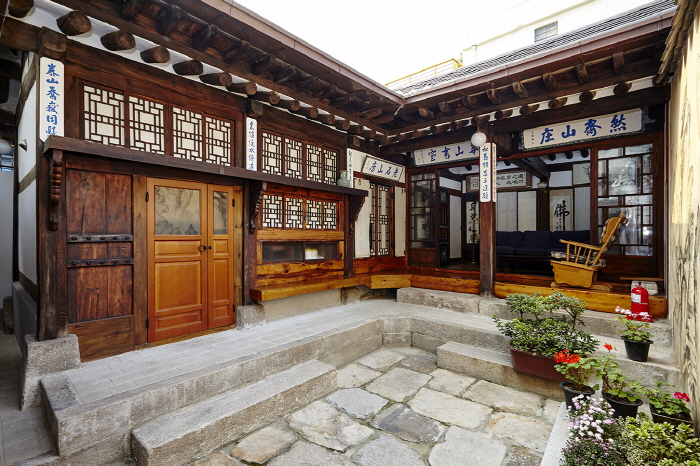
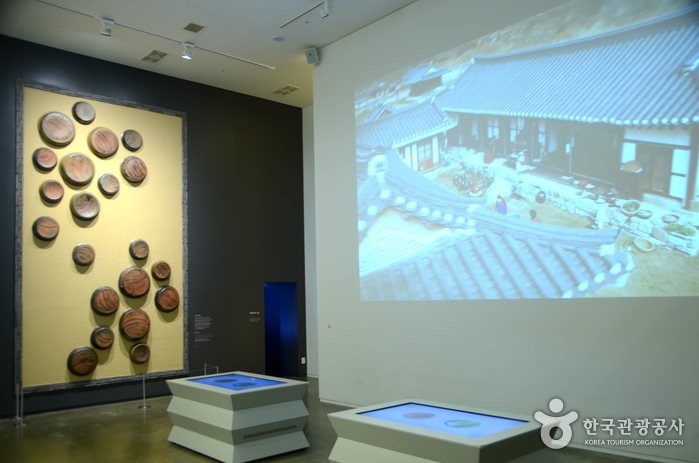
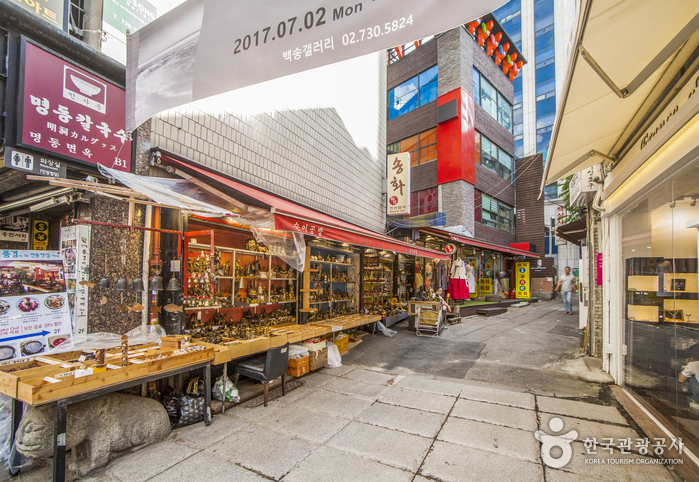
![Le palais Changdeokgung et son jardin Huwon (창덕궁과 후원 [유네스코 세계문화유산])](http://tong.visitkorea.or.kr/cms/resource/50/2678650_image2_1.jpg)
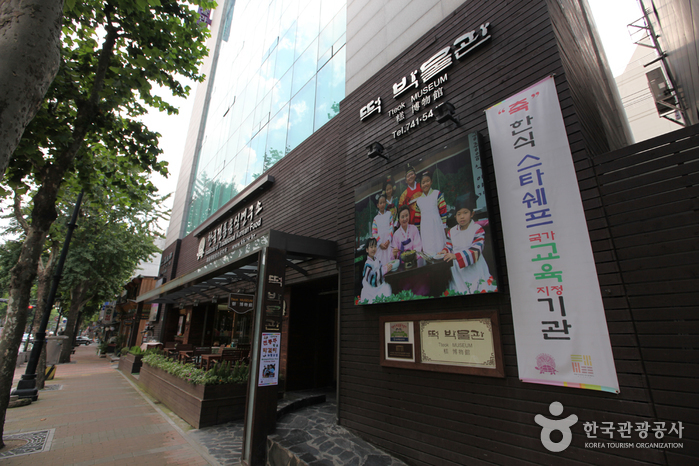
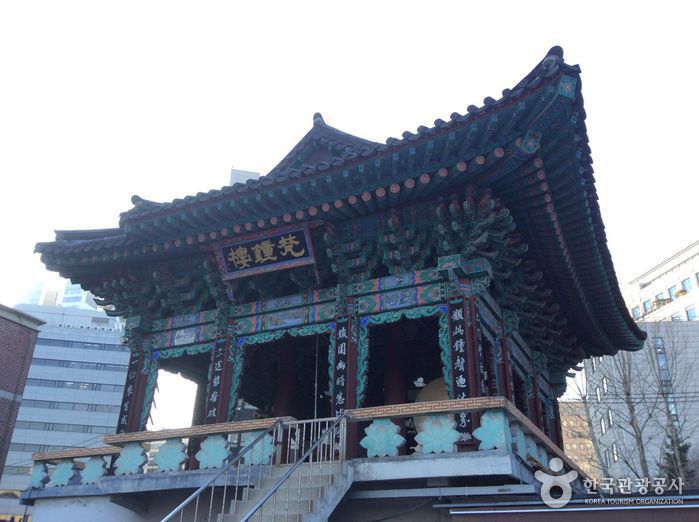
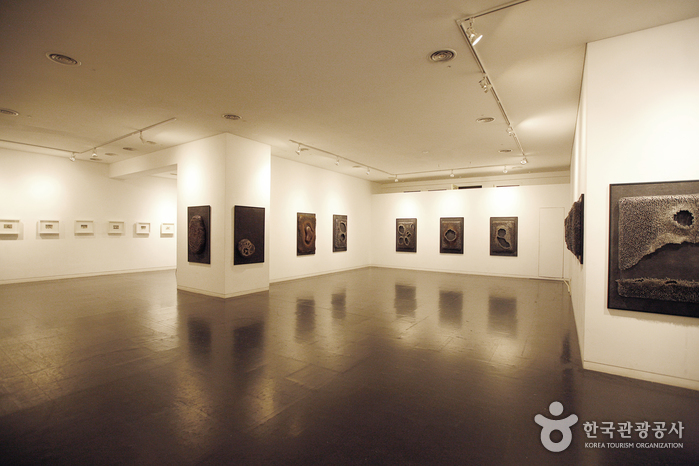
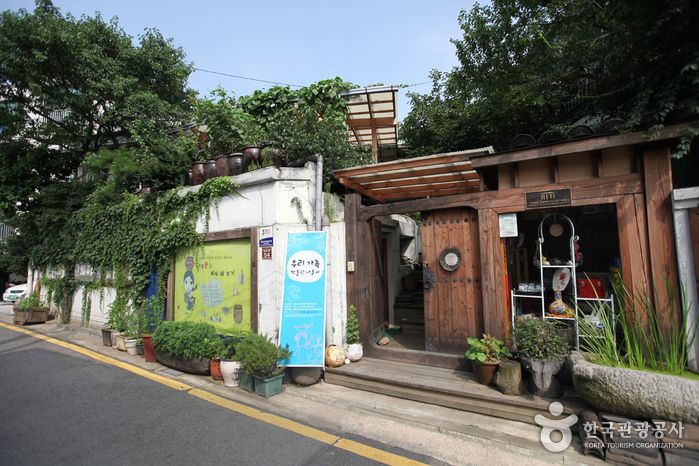
 Français
Français
 한국어
한국어 English
English 日本語
日本語 中文(简体)
中文(简体) Deutsch
Deutsch Español
Español Русский
Русский